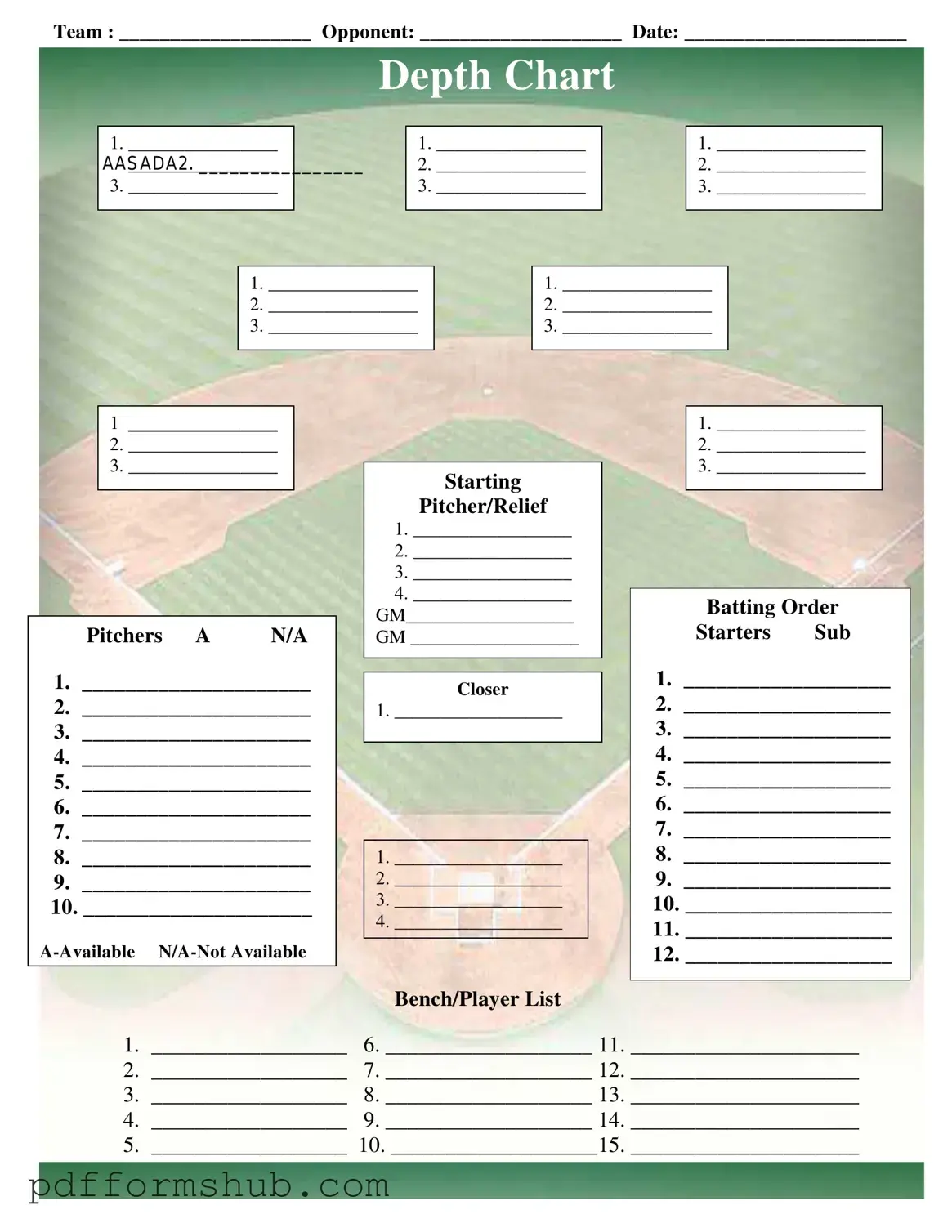When it comes to organizing a baseball game, having a well-structured Baseball Field Lineup form is essential for ensuring that everything runs smoothly. This form serves as a comprehensive guide for coaches and team managers, detailing critical information such as the team name, opponent, and date of the game. It also includes sections for listing players in a specific batting order, which is crucial for strategizing how to approach the game offensively. The depth chart section allows for easy reference to player positions and availability, ensuring that everyone knows their role on the field. Additionally, the form provides a dedicated area for pitchers, distinguishing between starting and relief options, which can significantly impact game dynamics. With spaces allocated for both starters and substitutes, it accommodates a full roster while allowing for flexibility in player management. Ultimately, this form is not just a tool for organization; it’s a vital part of the game that helps teams communicate effectively and perform at their best.
